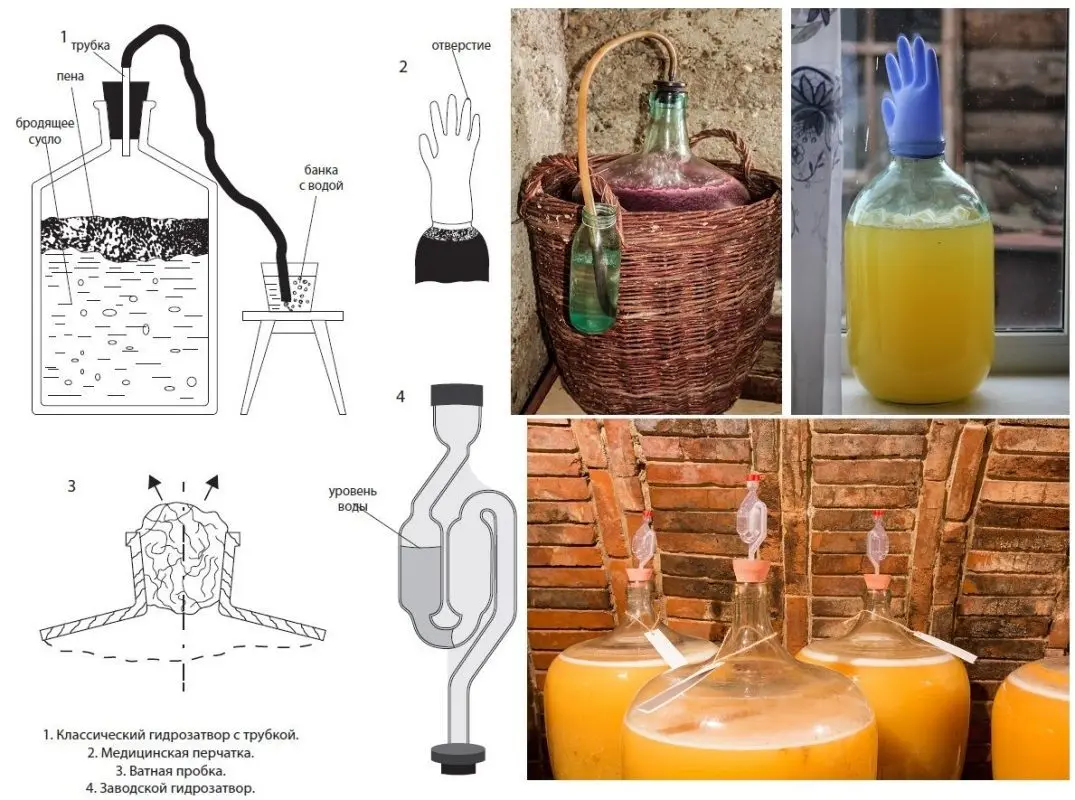Properly made wine from prunes is remembered for the characteristic aroma of ripe plums with light notes of dried fruits and a slightly “smoked” aftertaste. We will consider the recipe and the complete cooking technology. The main advantage is that raw materials are available all year round, for home winemakers this is a good opportunity to indulge in their favorite hobby until the next season of fresh berries and fruits.
Any prunes are suitable, but Sochi (Abkhazian, Tuapse) from the Vengerka plum variety is considered the best. The main thing is that the fruits are not spoiled, rotten or moldy. All used containers should be sterilized or washed with boiling water to prevent contamination of the wort by pathogenic microorganisms.
Ingredients:
- pitted prunes – 1 kg;
- sugar – 1 kg;
- water – 5 liters;
- raisins – 100 grams (or wine yeast per 7 liters of must).
Important! To avoid bitterness and almond flavor in the finished drink, use pitted prunes (preferred) or be sure to remove the pits in the second stage of preparation.
Prune wine recipe
1. If there is no wine yeast, 4-5 days before working with prunes, make a starter: pour unwashed raisins (so that wild yeast remains on the surface) into a jar, add 30 grams of sugar and 200 ml of water. Stir, transfer to a dark place with room temperature (20-28 degrees). Cover the neck of the jar with gauze or plug with a cotton plug. Leave for 3-4 days. The sourdough is ready when a slight smell of fermentation is felt, foam appears on the surface and a hiss is heard.
If mold has appeared, it means that the raisins are bad (infected), you need to make the starter first on raisins bought elsewhere.
2. Rinse the prunes thoroughly under running water, remove the seeds (if any).
3. Boil 4 liters of water (80% of the total volume). Pour boiling water over prunes, cover, leave for 60 minutes.
4. Strain the infusion through cheesecloth. Pour the liquid part into a plastic or enamel container with a wide neck.
5. Twist the pulp (steamed prunes) in a meat grinder and mix with the liquid part. Add 1 liter of clean, cold water (20% of the volume) and 500 grams of sugar (50% of the total).
6. After the must has cooled down to a temperature below 30°C, add wine yeast or the raisin starter prepared at the first stage. Mix. Cover with gauze to keep out flies and other insects. Leave for 5 days in a dark room at room temperature. After 8-24 hours, signs of fermentation should appear: foam, hiss, a slight smell of sour.
Be sure to stir the wort 2-3 times a day with a wooden stick or a clean hand, drowning the pulp that has floated to the surface in the liquid. Otherwise, the drink may turn sour.
7. 5 days after adding the starter (yeast), strain the wort through cheesecloth. Squeeze the pulp well. Squeezes are no longer used.
8. Add 250 grams of sugar (25% of the initial proportion) to the liquid part, mix, pour into a fermentation container. Fill up to a maximum of 75% of the volume to leave room for foam.
9. Install a water seal on the neck (you can use a medical glove with a hole in your finger). Leave the container in a dark place (cover) with a stable temperature of 18-28°C until the end of fermentation.

10. After 5 days from the date of installation of the water seal, add the remaining sugar (250 grams or 25% of the calculated amount). To do this, drain separately 150-200 ml of the must, dilute the sugar, pour the resulting syrup back into the fermenting wine and close the container again with a water seal.
Fermentation of homemade wine from prunes lasts 30-50 days. The process is over if the water seal does not release gas for at least 12 hours (the glove has deflated), a layer of sediment has appeared on the bottom, and the wine has become lighter.
If the fermentation has not stopped after 50 days from the date of installation of the water seal, in order to avoid the appearance of bitterness, the wine must be poured through a tube into another container without touching the sediment at the bottom, then put under the water seal to ferment at the same temperature.
11. After the fermentation is over, drain the young prune wine from the sediment (through a straw). Try. If desired, add more sugar for sweetness (to taste), you can also increase the strength of vodka or alcohol in an amount of 2-15% of the volume of wine. Fixing aids storage but makes the flavor harsher.
12. Fill aging containers (glass or plastic) with wine to the top so that there is no contact with oxygen. Close hermetically (if sugar was added, keep under a water seal for the first 7-10 days).
13. Transfer the drink for maturation to the cellar, cellar or refrigerator with a temperature of 5-16°C. Leave for at least 3-4 months (preferably 5-8). Aging significantly improves the taste of the wine.
14. When sediment appears in a layer of 2-5 cm, filter the wine by pouring it through a tube from one container to another (at first every 10-20 days, then less often).
15. Homemade prune wine is considered ready when the sediment no longer falls. The drink can be bottled and hermetically sealed.
Fortress – 10-12%. If stored in a refrigerator or cellar, the shelf life is up to 5 years.










